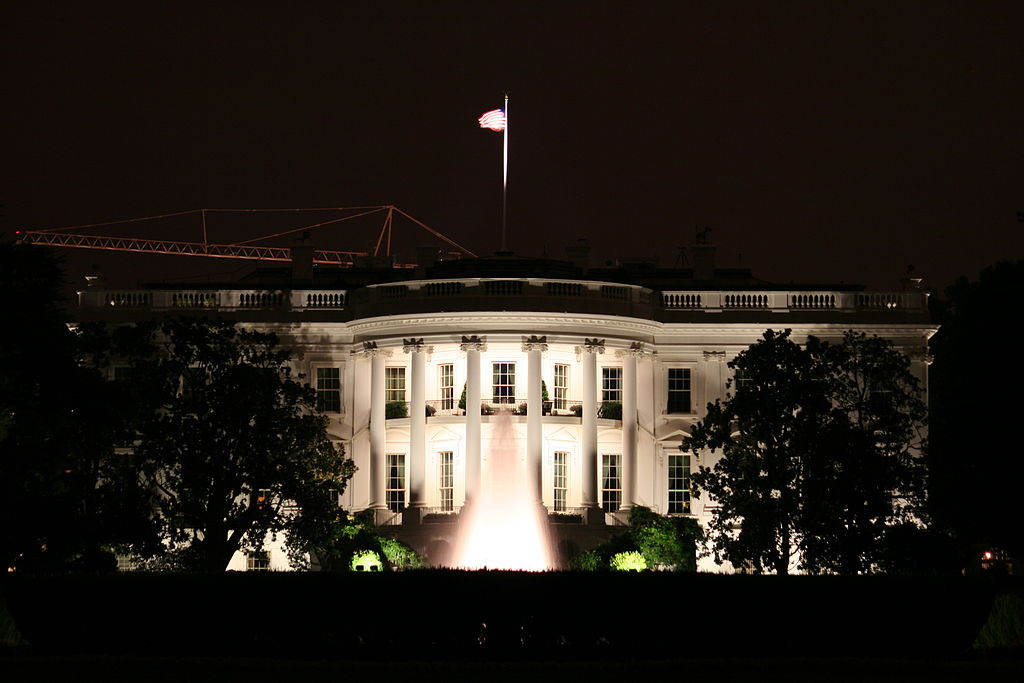Navigating Crises With a Lower Bar to Nuclear War
4738fc7d-0f1b-43b0-ae36-ded3715c6899.jpg?sfvrsn=d6be01ab_5)
Published by The Lawfare Institute
in Cooperation With

If not for a great deal of luck, the evening of May 10 may well have ended with nuclear war.
As the day unfolded in South Asia, the simmering three-day confrontation between India and Pakistan began to escalate, featuring unprecedented air incursions and missile strikes, drone battles between the two countries, false rumors of cyberattacks, and reports of explosions at strategically critical bases in both countries—all within an eight-hour span. By noon, Pakistan’s leadership called an emergency meeting of its National Command Authority, the group that oversees and instructs its nuclear forces.
By the early evening, long-standing “red lines” had been crossed, and the uneasy bounds of the relationship between Islamabad and New Delhi seemed to be crumbling. It was the most intense direct fighting between any two nuclear-armed states in history. Fortunately, behind-the-scenes diplomacy, a well-timed bilateral pause, and a healthy dose of luck produced a fragile ceasefire—a meaningful step back from the brink.
But a disconcerting question looms: How can two countries slide from limited conventional skirmishes to nuclear signaling in a single afternoon? While the proximate answers lie in the long histories and dynamics between the two rivals, a critical accelerant is found in the presence of—and reliance on—so-called tactical nuclear weapons.
A Lower Bar
Although all nuclear weapons have devastating effects, tactical nuclear weapons have less explosive power—on the order of tens of kilotons, about the strength of the bomb that devastated Hiroshima—and can be operated by troops on the battlefield instead of solely by long-range, strategic forces. Both the United States and the Soviet Union fielded scores of tactical nuclear systems during the Cold War, but tactical stockpiles were among the first categories of weapons targeted for deep cuts following the collapse of the USSR. Today, tactical nuclear weapons still remain in the arsenals of the U.S. and Russia—as well as in those of both Pakistan and India.
Distinctly, Pakistan is said to have a first-use strategy for their tactical nuclear stockpile: first, intended as a way to demonstrate resolve in the event of a serious attack, and, ultimately, to attempt to counter a superior Indian conventional force on the ground—with the potential use of such weapons on Pakistan’s own territory.
This strategy, reminiscent of NATO’s Cold War plans to hold off an overwhelming Red Army invasion in Europe, operates at a deliberately lower level of conflict so as to theoretically halt a war before it becomes a much more serious strategic nuclear exchange.
It follows, then, that the theoretical targets of tactical nuclear weapons are on the unfolding battlefield: troops, resources, and facilities directly affecting the evolving situation on the ground, rather than cities and major civilian infrastructure. Threatening to go nuclear at that level was thought to be more credible—and potentially more effective at halting a war—than relying on high-level threats. By lowering the bar for nuclear use, the theory goes, a potential adversary would read the increased risks and avoid making provocations in the first place.
But in looking at real-world scenarios, the assumptions that support this theory fall dangerously short.
For one thing, there is no guarantee that any nuclear state will clearly communicate parameters for tactical use ahead of time, or that its adversaries will correctly understand those red lines. Misreads on either side can counterintuitively support a risk-taking strategy, as reflected in India’s apparent thinking during the most recent crisis. Worse, a conventionally disadvantaged state like Pakistan is actually incentivized to be deliberately ambiguous about its nuclear threshold.
Additionally, there are few real-world targets for tactical nuclear weapons that would not see the creation of significant secondary and tertiary crises. Troops in the field or ships at sea can be mobilized and easily dispersed (making a nuclear strike less effective militarily) and, when massed, are likely to be using civilian infrastructure like highways, railways, or ports. Bases like airfields can present the right size target but are typically integrated with civilian communities in a way that makes it impossible to reliably “spare” nonmilitary areas. Along the densely settled contested border of India and Pakistan, for example, there are indeed very few places in which the effects of such a blast could be militarily relevant and also contained only to remote areas.
So if a nuclear weapon were to be used as a result of a conflict reaching a country’s “tactical” threshold, its immediate effects would trigger unpredictable—and highly manipulable—reactions, creating a dire political crisis far beyond the conflict at hand. On the one hand, a state that uses tactical nuclear weapons would be cynically incentivized to downplay the impacts, whether by official statements or actions, or by conducting information operations to shape public understanding. Such a campaign would draw from and promote existing justifications of the legitimacy of these weapons. Conversely, a defending state would stand to benefit from highlighting the destruction and building countervailing momentum, showcasing the damages incurred and calling for an escalation of the conflict in order to defend critical norms.
Combined, these oppositional incentives would raise the rhetorical stakes substantially, driving leaders to make critical decisions while inundated by conflicting narratives.
And internationally, even non-involvement risks far-reaching consequences. Beyond the shocking local disaster, the use of a single tactical nuclear weapon anywhere would damage the 80-year norm against using nuclear weapons so severely that it would demand a response from all governments around the world: whether to take additional risks by forcefully countering any gains made from nuclear use, or to hedge, and possibly accept a new standard of fighting—potentially forever.
Worse, deliberations during such a moment would be conducted within an unprecedented—and likely unreliable—information environment, which can suffer from hostile campaigns by adversary states, algorithm-driven distortions that promote false or misleading information, or simply the fog-of-war surrounding a dramatic event. Failures in the information environment at such a moment can hamper recovery efforts, shape public understanding, and pressurize strategic thinking.
So what does the safest next step after a nuclear attack look like to governments operating under high-pressure environments, with foggy and potentially false information? And how can any long-term thinking be integrated into such a moment?
Multiplying Risks
Failure to delicately manage a post-nuclear moment carries a real risk of continued nuclear use, or even of spiraling escalation. On the other hand, an overly acquiescent response risks ushering in a new era in which nuclear weapons are understood to be acceptable weapons of war.
A recent study by The Council on Strategic Risks explores the knock-on effects of such a crisis, finding that beliefs about the roles and utility of tactical nuclear weapons can enable harmful narratives that would greatly complicate the strategic decision-making environment—both before and following any potential use. This includes the misleading notion that such weapons are “smaller,” as well as arguments that dismiss or ignore those crises that would likely be created by even limited nuclear use. As some in Congress and the Pentagon pursue an expansion of American tactical nuclear weapons, Chinese developments implicate a broadened role for its growing nuclear arsenal, and Moscow has explicitly lowered its own threshold for nuclear use, the stated and believed capabilities of these weapons are multiplying the associated risks of any future crisis.
It is a poor time to sharply decrease crisis stability. The renewed nuclear arms race comes at a time when advances in missile and drone capabilities are quickly reshaping ideas of combat, cyberwarfare offers an ongoing source of uncertainty, and distortions in the information sphere are undeniably affecting the analyses of decision-makers worldwide. And in the cerebral realm of nuclear deterrence, perception is everything. As the ground continues to shift, even just the stated interest in tactical nuclear weapons is enough to lower the perceived barriers to use in any future conflict.
This latest crisis between India and Pakistan came dangerously close to crossing the nuclear line, and its tentative resolution neither reduces the inherent risks of the two countries’ nuclear posture (that is, those risks brought by a belief in tactical nuclear warfighting) nor changes any of the conditions that created the crisis in the first place. And as both countries come to rely less on deterrence and more on crisis management, that lower bar of nuclear escalation looms large.
It’s not just South Asia accumulating these risks. Besides the increasing salience of tactical nuclear weapons in the arsenals of the U.S., Russia, and potentially soon China, strained treaty relationships are causing planners in partner states to consider reintroducing their own. In the Taiwan Strait, on the Korean Peninsula, in the Middle East, or across NATO’s frontier countries, the presence of tactical nuclear weapons—and importantly, the claims surrounding them—will shape and pressurize any future crisis or conflict, and give leaders even slimmer margins for error.
In that sense, May 10 ought to serve as an urgent warning to all nations that embracing nuclear weapons as a warfighting capability carries an unsustainable level of risk. For Washington in particular, planners looking at tactical nuclear weapons must consider if U.S. national security strategies would be better implemented under a lower bar for escalation. Indeed, for most imagined conflicts with China or Russia, the presence and presumed acceptability of such weapons would undercut U.S. conventional advantages, opening up a wide set of potentially disastrous uncertainties.
Deemphasizing tactical nuclear weapons—indeed, disavowing the viability or legitimacy of using nuclear weapons for anything but strategic deterrence—is a pivotal step back from this brink, reducing the associated dangers of future crises. Practical short-term steps may include reducing entanglement between nuclear and conventional forces (an intractable problem for tactical nuclear weapons in particular), increasing clarity within doctrines, and building regularity around exercises and deployments. But the most effective step may be to simply understand these weapons better. By openly acknowledging the steep and uncontrollable costs of any tactical nuclear use, leaders can help to foreclose rhetorical or political openings for risk-taking in the first place. Together, these steps can support the critical norm of non-use, thereby increasing predictability, stability, and resilience in the international security environment.


.jpg?sfvrsn=5a43131e_9)


